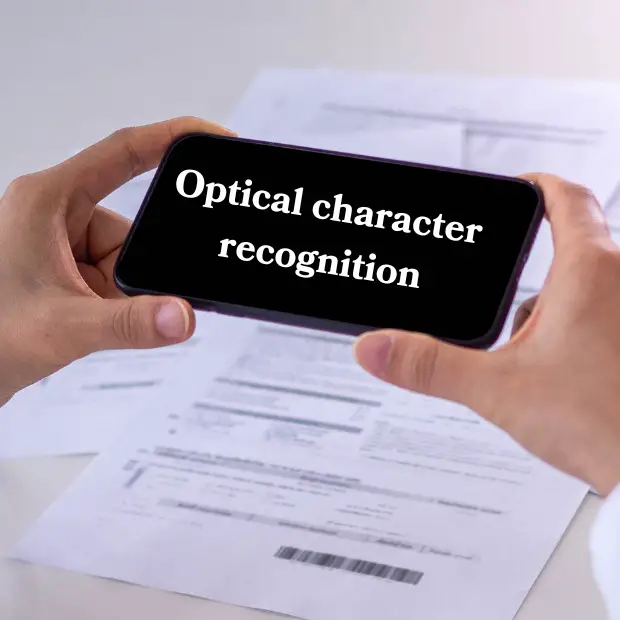
Optical character recognition (OCR) is an advanced technology that helps extract text and other data from digital images within a few seconds.
If you are a writer and want to copy certain numeric data from any image, you can use image-to-text OCR tools to extract text from the image and add an example to your article or essay. Today, this technology this technology comes in the form of smart image-to-text converters. With the help of OCR tools, you can start the conversion from image to text without compromising on quality and grammatical correctness. There are certain reasons writers need to proceed further with text extraction, where these OCR scanning tools work perfectly.
Here are some advantages content writers can get from image-to-text OCR tools:
1. Conserve Time and Aids in Data Preservation
OCR tools save time by automating transcribing text from images. This allows content writers to focus more on the actual writing and research aspects, increasing overall productivity. Besides the amazing conversion speed, OCR aids in data preservation in the original format. Once you are done with the conversions, the image data is automatically deleted and not even the servers of the converters can access it. This is why many people depend on online tools for picture-to-text transformations. OCR also enables writers to digitize important information from physical documents or images, ensuring that valuable content is preserved and easily accessible in digital format.

There are a lot of technologies, including OCR, that make life easier for modern-day writers. It would be foolish not to take advantage of this software and web apps.
2. Helps Improve Writing Efficiency
Image-to-text converters have revolutionized the way writers work, providing immediate assistance and enhancing their research capabilities. Writers often scour the internet for valuable information, and images can hold hidden gems of knowledge. However, manually transcribing the content from images is a time-consuming and error-prone process. Enter OCR converters – a game-changer! With these tools, writers can effortlessly extract text from images within seconds, converting it into an editable file. This not only saves time but also streamlines the editing process, eliminating grammatical errors and allowing writers to focus on crafting their best work. Say goodbye to tedious tasks and hello to efficient writing with the power of OCR converters at your fingertips!
3. More Accurate Reproduction of Original Texts
Ensuring accuracy is paramount in any writing task. Human errors during manual transcription of text from images can lead to a decline in overall quality. OCR solutions, on the other hand, efficiently convert images to text and transcribe them with minimal to zero inaccuracies. By utilizing advanced algorithms, these technologies faithfully reproduce the original text, maintaining its correctness and consistency. This ensures a high-quality output, with little room for misunderstandings caused by transcription mistakes. Traditionally, images don’t allow for straightforward copying and pasting of their content. Enter OCR image-to-text conversion tools, which tackle this challenge effortlessly. They scan images, extracting all the vital text that can be easily copied, edited, and saved for future use. Writers can now easily customize the document layout to suit their needs, providing tremendous flexibility. This increased usability empowers authors to incorporate the material into their writing. Moreover, text conversion through OCR makes content more accessible, benefiting individuals using software designed for those with disabilities. In conclusion, OCR technology proves to be a game-changer, elevating writing precision and enhancing the inclusivity and accessibility of written material.
3. Efficient Data Retrieval & Space Conservation
OCR tools have significantly minimized the reliance on physical documents, sparing valuable physical space. Writers can now generate digital copies of text that occupy minimal storage and remain accessible for a lifetime. A notable advantage of these tools lies in their robust indexing algorithms, enabling writers to swiftly search for specific content files in a matter of milliseconds. This quick and efficient retrieval is a remarkable feat, especially when dealing with a multitude of files, a task that would be nearly impossible with physical papers. As a result, referencing and attributing sources in their work becomes remarkably simpler for writers, streamlining their writing process and enhancing overall productivity.

Many text extractor apps support multiple languages, so if you’re a writer who is not a native English speaker, these tools can help you tremendously.
4. Aids in Language Translation
In the past, writers faced challenges with localization, struggling to convert texts from one language to their native language. However, with image-to-text converters, this obstacle has been surmounted. These converters not only help extract text from images but also enable writers to translate writings into their preferred languages. This remarkable capability enhances the productivity of content writers, making them invaluable resources for accomplishing major writing projects. The conversion of images into text further aids the writing process by facilitating the efficient utilization of translation OCR tools. As a result, writers can now effortlessly work with diverse texts, breaking language barriers and expanding their creative horizons.
5. Efficiently Extract Quotes and References
Content writers can use OCR to extract quotes and references from images, simplifying and including proper attributions to other people’s work. Sometimes we need to summon the wisdom of the titans of the industry and other trailblazers to give more credence to our thesis or argument. To do that, we search for relevant quotes by influential people from the past and present, which sometimes come in the form of an image instead of plain text, prompting us to retype the text word-for-word.

The capability to extract text from images in a matter of seconds will enable you to share editable files with your teammates and clients.
6. It Fosters Seamless Collaboration
OCR facilitates seamless collaboration among writers, as it enables the easy sharing and editing of text extracted from images, enhancing team efficiency. Writers can even repurpose content from images, such as infographics or diagrams, into textual formats, allowing them to use the material in various types of written content. It makes even long text extracted from digital photos easier to share.
Wrap Up
Writing is no doubt a very hectic job that requires exceptional research capabilities and writing passion. It’s a fusion of challenges where you have to deal with every rising fear of new content concepts. Text extractors or image-to-text OCR tools reduce the manual struggle by automating the extraction of written words and numbers from infographics and other digital images. This facilitates the preparation of content files that writers can easily alter as required. Next up, you may want to explore a guide on how to avoid a blogger’s block.
Hey there, welcome to my blog! I'm a full-time entrepreneur building two companies, a digital marketer, and a content creator with 10+ years of experience. I started RafalReyzer.com to provide you with great tools and strategies you can use to become a proficient digital marketer and achieve freedom through online creativity. My site is a one-stop shop for digital marketers, and content enthusiasts who want to be independent, earn more money, and create beautiful things. Explore my journey here, and don't forget to get in touch if you need help with digital marketing.

